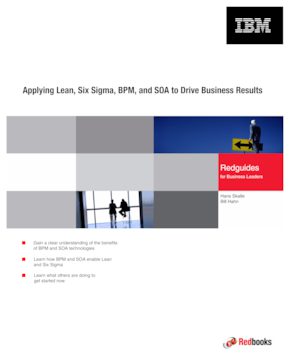Abstract
Lean Six Sigma unites tools and techniques from Lean and Six Sigma methodologies to produce real results. It uncovers process waste, reduces non-value adding activity, and increases organizational capability. The benefits might even be felt in IT where waste is being removed from application development processes, significantly reducing costs and freeing resources and budgets for needed investments and backlogged projects.
Business process management (BPM) technologies and service-oriented architectures (SOAs) combine with Lean Six Sigma to accelerate improvements and results. As the world moves faster, the ability to change becomes a key differentiator. Rapid, technology-driven process improvement and transformation become critical to success and to survival. The rewards can be great, especially for companies that take action now to bring these disciplines, techniques, and technologies together.
This IBM® Redguide™ publication is intended to help companies that are leaders in their markets or are looking for new ways to differentiate themselves from their competitors. This edition describes the key BPM, SOA, and Lean Six Sigma components, summarizes the linkages between them, and highlights recent results that leading firms have achieved. This guide outlines the “think big, start now” steps that are needed to move your own initiative forward. This guide also suggests ways to successfully avoid some of the barriers that have hampered others on their Lean or Lean Six Sigma or BPM journeys.
Table of Contents
Executive overview
Key concepts
Combining technology, tools, and techniques
Leading practices
Common success inhibitors
Calculating benefits
Enabling Lean Six Sigma with business process management
